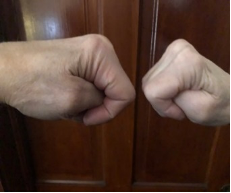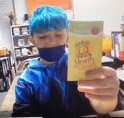BrainWise Live it! Reinforcing the 10 Wise Ways
Posted On: March 30, 2022
I am new to our agency and want to teach BrainWise with fidelity. I run a weekly, one-hour, group session for eight weeks. How can I help participants effectively use the 10 Wise Ways?
This is a frequent request.
BrainWise concepts may be easy to remember, but research found that more than 20 hours of practice are needed for the development of attitude and practice effects.
[1] Reinforcement is critical to retaining and applying the 10
Wise Ways and instructors have found the following strategies help participants.
1. Everyone Has Problems and use your Wizard Brain over your Lizard Brain are important first lessons. Nonscientists of all ages and backgrounds are interested in information about the brain and appreciate learning about how their brain can help them prevent and manage problems. The easy-to-understand material includes concrete teaching tools that explain why the Lizard Brain reacts, and how learning the 10 Wise Ways will help the Wizard Brain tame the Lizard Brain’s impulses and emotions.
2. People are unaware of the connection between the brain’s five senses and how the senses send signals to the brain’s relay center and Lizard Brain. Learning this helps them understand about the body’s survival process and why it triggers non-thinking reactions in their brain.
3. BrainWise gives participants tools that help them remember this process – the Brain Worksheet, the BrainWise “Stop and Think” hand brain, and Brain Bumps.
4. Encourage participants to use their thinking skills every day and remind them to use their hand brain gestures to help them Stop and Think. The remaining program lessons teach nine additional skills that help them build connections.
This foundation helps them recognize why they need to learn and practice using the 10 Wise Ways. It prepares them to learn the difference between “harmful” Lizard Brain actions from the “helpful” Lizard Brain survival actions and helps them understand why it is important to learn the other nine Wise Ways — build a strong Constellation of Support, recognize Red Flag warnings, stay low or off their Emotions Elevator, separate fact from opinion, ask the right questions, identify choices, consider the consequences of choices, set goals and communicate effectively.
As they learn and practice each Wise Way, they draw a line on their brain picture to show they are building a brain connection. They do the same thing on their hand brain by imagining that they are building brain connections between the top of their fingers to their relay center/Lizard Brain at the base of their fingers, across the top of their palm.
5. The BrainWise Live It! section of the curriculum has reinforcement examples and activities.
Many instructors use the examples in the manual and customize them to specifically fit the problems of their participants. For example, Jeopardy! and Kahoot! game templates are available on the Internet and provide fun and creative ways to reinforce the 10 Wise Ways.
Here is a link to a Jeopardy game that reinforces BrainWise CPR.
You can do the same with Who Wants to Be a Millionaire? and Kahoot! Use games to customize problem situations and discuss the various thinking skills participants use to assess the problems. Online game formats are expansive and will engage participants of all ages.
These activities are fun and help children, youth and adults gain the practice they need – with and without instructor contact –to master Wizard Brain thinking. Instructors wisely use their time together to teach new lessons and make plans to use the 10 Wise Ways every day.
|
|
|
Play Instructional Games!
|
|
Images of Students Playing Kahoot
Please follow and like us:





